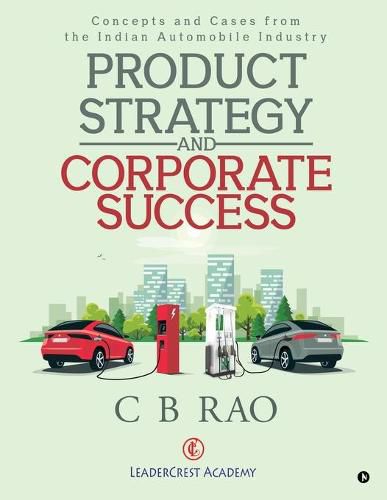Readings Newsletter
Become a Readings Member to make your shopping experience even easier.
Sign in or sign up for free!
You’re not far away from qualifying for FREE standard shipping within Australia
You’ve qualified for FREE standard shipping within Australia
The cart is loading…






This title is printed to order. This book may have been self-published. If so, we cannot guarantee the quality of the content. In the main most books will have gone through the editing process however some may not. We therefore suggest that you be aware of this before ordering this book. If in doubt check either the author or publisher’s details as we are unable to accept any returns unless they are faulty. Please contact us if you have any questions.
Product strategy is the key driver of business strategy and corporate success. This book brings out several important aspects of product strategy, drawing upon examples from the Indian automobile industry, which is verily the bellwether of the Indian economy. The automobile industry is not only a strategic industry economically but also an instructive industry intellectually. The industry is the cradle of modern management and is a synthesis of various functional strategies. The growth of the automobile industry or, for that matter, any consumer-facing industry lies in its ability to maintain a continuous pipeline of new and innovative products, substantive in functionality and stylistic in appearance. The automobile industry provides the perfect backdrop for discussing products as the core of the corporate business strategy. The global automobile industry, including the Indian automobile industry, is at an inflection point with portends of an unprecedented transformation.
The drivers of this transformation are already seen in terms of connected vehicles, autonomous mobility, electric vehicles and digital technologies. The book, through its eighty chapters, demonstrates the synergistic interplay between technology and business, strategy and execution, innovation and inventiveness, enterprise and regulation, indigenization and globalization, structure and process, resourcing and spend, and leadership and management. This interplay would determine India’s ability to become a major player in this transformation. This book will be of interest to industry professionals, policy makers, the academic community and the general public.
$9.00 standard shipping within Australia
FREE standard shipping within Australia for orders over $100.00
Express & International shipping calculated at checkout
This title is printed to order. This book may have been self-published. If so, we cannot guarantee the quality of the content. In the main most books will have gone through the editing process however some may not. We therefore suggest that you be aware of this before ordering this book. If in doubt check either the author or publisher’s details as we are unable to accept any returns unless they are faulty. Please contact us if you have any questions.
Product strategy is the key driver of business strategy and corporate success. This book brings out several important aspects of product strategy, drawing upon examples from the Indian automobile industry, which is verily the bellwether of the Indian economy. The automobile industry is not only a strategic industry economically but also an instructive industry intellectually. The industry is the cradle of modern management and is a synthesis of various functional strategies. The growth of the automobile industry or, for that matter, any consumer-facing industry lies in its ability to maintain a continuous pipeline of new and innovative products, substantive in functionality and stylistic in appearance. The automobile industry provides the perfect backdrop for discussing products as the core of the corporate business strategy. The global automobile industry, including the Indian automobile industry, is at an inflection point with portends of an unprecedented transformation.
The drivers of this transformation are already seen in terms of connected vehicles, autonomous mobility, electric vehicles and digital technologies. The book, through its eighty chapters, demonstrates the synergistic interplay between technology and business, strategy and execution, innovation and inventiveness, enterprise and regulation, indigenization and globalization, structure and process, resourcing and spend, and leadership and management. This interplay would determine India’s ability to become a major player in this transformation. This book will be of interest to industry professionals, policy makers, the academic community and the general public.